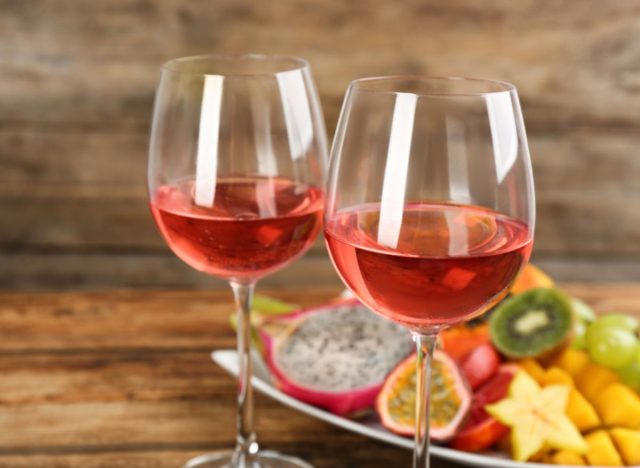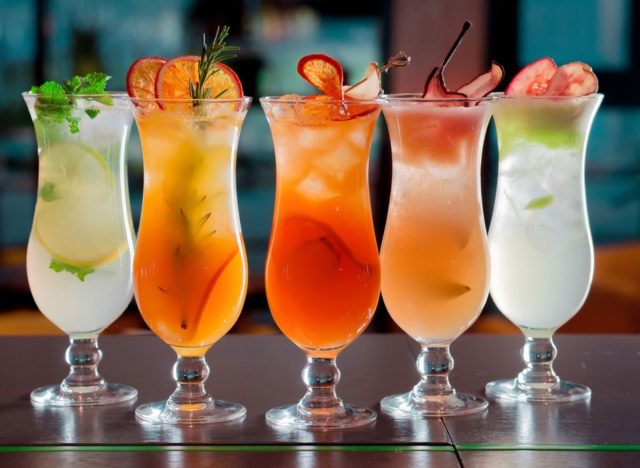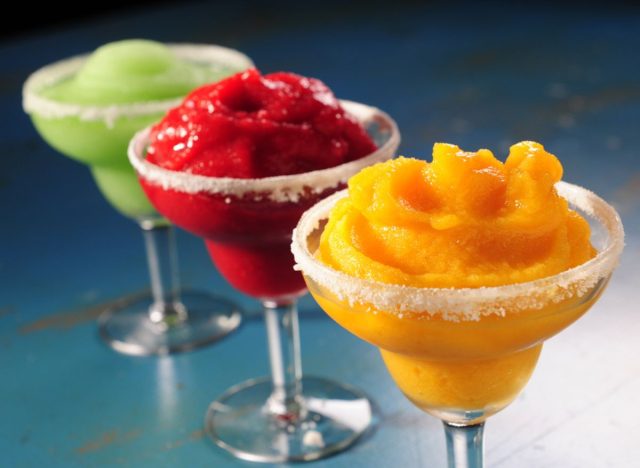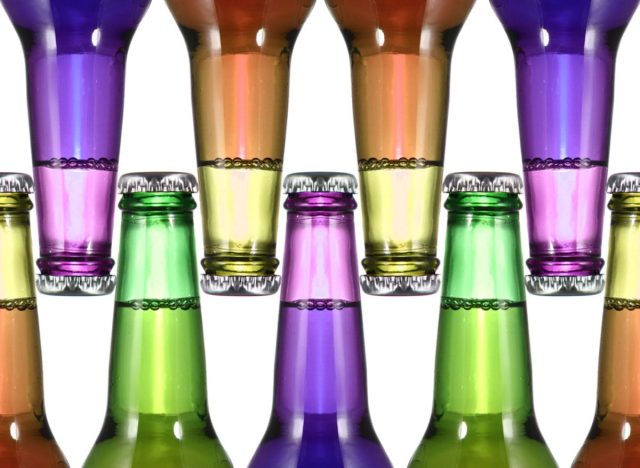Did you know drinking alcohol can actually benefit your blood sugar levels? It may sound strange, but according to the American Diabetes Association (ADA), a daily drink can improve blood sugar management and insulin sensitivity. This is if you are moderately drinking the recommended limit of one or two drinks a day—which is defined as a 5-ounce glass of wine, a 12-ounce beer, or 1.5-ounces of an 80-proof spirit.
Needless to say, while drinking alcohol can sometimes be beneficial for stabilizing blood sugar, drinking it in excess can cause an unhealthy dip in blood sugar levels. Drinking alcohol can disrupt the process of digestion in your liver because it prioritizes processing the alcohol (instead of releasing glucose) during digestion. Too much of it can cause a dip in blood sugar levels, which comes with an array of symptoms including shakiness, anxiety, nausea, hunger, dizziness, fatigue, headaches, and more. A major dip in glucose can lead to hypoglycemia, which can be dangerous especially for those with diabetes, according to the ADA.
Along with drinking in excess, some beverages can negatively impact your health by spiking your glucose levels due to the high volume of added sugars in each sip. To avoid major spikes, here are a few of the worst beverages for your blood sugar levels to keep in mind—and a few sipping solutions. Plus, for even more healthy drinking tips, here are the 5 Best Drinking Habits for Your Blood Sugar.


According to Johns Hopkins Medicine, alcoholic beverages high in calories typically are high in added sugars as well, including sweet dessert wines. On average, a dessert wine contains 8 grams of sugar per 3.5-ounce glass. Types of popular sweet wines include port, white zinfandel, Moscato, and Riesling.
A better solution is to look for a dry wine. Dry red wine tends to be the best with less than one gram of sugar per 5-ounce glass, followed by dry white wine which averages around 2 grams.


While it does vary from cocktail to cocktail, most cocktails are mixed with different types of syrups for added sweetness and flavor. Ordering a cocktail out means you’re not in control of how much syrup is mixed into your drink, which can be an issue if you’re looking to keep your blood sugar levels as stable as possible.
READ RELATED: Best Habits to Prevent a Migraine, Says Neurologist
The best solution is to choose a cocktail that doesn’t have “simple” (i.e. simple syrup) in it, as well as other natural sweeteners like honey or maple syrup. Instead, order a regular martini that typically does not contain added sugars (just gin and vermouth), a vodka or tequila soda with a wedge of lime, or mix up your own with these 9 Healthiest Cocktails You Can Make at Home!


A frozen piña colada, margarita, or even a frosé sounds ideal for a summery day, yet these concoctions are likely loaded with added sugars that can easily cause glucose spikes. The added fruit juices and concentrates can increase sugar count, and some restaurants may even mix in a sugary slush to make it frozen. Without any indication of how much sugar is in this drink, the best solution is to just skip it at the bar.
Instead, you can make your own healthier version at home! If you’re craving a frozen beverage, why not blend up this Piña Colada Smoothie (spike it, we won’t judge!) or make these popsicles? Or how about this Bubbly Rosé Kombucha Float?


Many wine coolers—those colorful drinks served in bottles—are loaded with added sugars with upwards of 30 grams of sugar per bottle. That’s 7.5 teaspoons, which is already higher than the recommended daily amount. According to the American Heart Association, women should limit their daily added sugars to six teaspoons (25 grams), and men should limit it to nine (36 grams).
If you love the convenience of picking up a bottled cocktail, why not look for a low-sugar hard seltzer instead? Many hard seltzer options are flavored while still extremely low in added sugars, making it possible to enjoy a flavored drink without the inevitable spikes.
Source:









